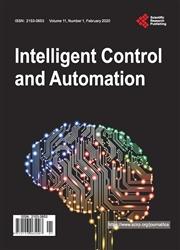Potential Legal Issues and Care Implications during Care-Prevention Gymnastic Exercises for the Elderly Using Pepper in Long Term Health Care Facilities
引用次数: 19
Abstract
In Japan, the shortage of personnel is a problem in long-term care nursing and rehabilitative care prevention. Nevertheless, Japan has taken measures to compensate for these shortages by promoting medical and nursing care activities using robotic technologies, and employing human resources from overseas. The purpose of this study was to determine potential legal issues and subsequent implications for care during prevention gymnastic exercises for the elderly using Pepper in long-term health facilities. The application program of Care-Prevention Gymnastics Exercises for Pepper (Pepper with CPGE) was made by the Xing Company Japan. Currently, care workers become intermediaries for the safe use of Pepper with CPGE. However, it was realized that some legal issues may arise if Pepper with CPGE alone will carry out these preventive care programs for the elderly without the presence of care workers as intermediaries. In this situation, using Pepper with CPGE alone to conduct care prevention gymnastics will require safety measures to prevent these possible practice issues and anticipate implications for care. In this regard, determining detailed target levels of rehabilitation exercise demands and environmental setting safety become essential factors. The use of humanoid robots in healthcare is expected to influence more practice protocols in contemporary and futurist rehabilitative human care. The identification of possible safety issues in performance and environmental situations, and implications for care are critical to ensure safe and valuable rehabilitative health care practices for the elderly population.长期卫生保健机构中老年人使用胡椒进行护理预防体操练习的潜在法律问题和护理影响
在日本,人员短缺是长期护理和康复护理预防方面的一个问题。尽管如此,日本已采取措施弥补这些短缺,利用机器人技术促进医疗和护理活动,并从海外雇佣人力资源。本研究的目的是确定潜在的法律问题以及在长期卫生设施中使用胡椒粉的老年人预防性体操锻炼期间的护理影响。日本兴公司编制了《辣椒保健预防体操练习》(辣椒加CPGE)的应用程序。目前,护理人员成为CPGE安全使用Pepper的中间人。然而,人们意识到,如果Pepper和CPGE单独为老年人实施这些预防性护理计划,而没有护理人员作为中介,可能会出现一些法律问题。在这种情况下,单独使用Pepper和CPGE进行护理预防体操需要采取安全措施来预防这些可能的练习问题,并预测对护理的影响。在这方面,确定康复锻炼需求的详细目标水平和环境设置安全成为重要因素。人形机器人在医疗保健中的使用预计将影响当代和未来康复人类护理的更多实践方案。识别表现和环境状况中可能存在的安全问题,以及对护理的影响,对于确保老年人的安全和有价值的康复医疗实践至关重要。
本文章由计算机程序翻译,如有差异,请以英文原文为准。
求助全文
约1分钟内获得全文
求助全文

 求助内容:
求助内容: 应助结果提醒方式:
应助结果提醒方式:


